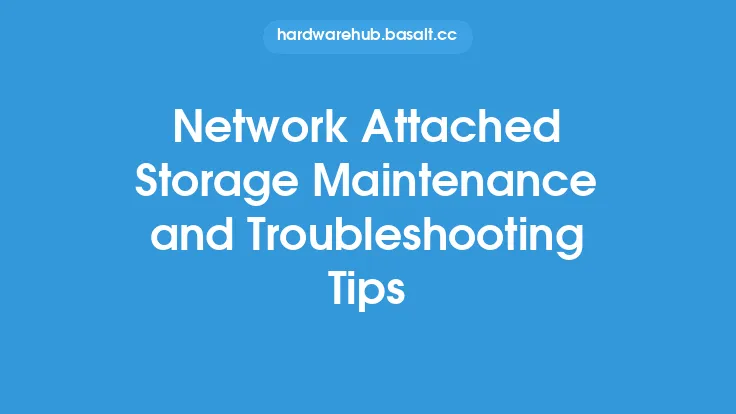Setting up a home network attached storage (NAS) system can be a daunting task, especially for those who are not tech-savvy. However, with the right guidance, it can be a straightforward process that provides numerous benefits, including centralized storage, data protection, and easy access to files from multiple devices. In this article, we will walk you through the steps to set up a home NAS system, covering the essential components, configuration, and best practices.
Introduction to NAS Components
A typical NAS system consists of several key components, including the NAS device itself, hard drives or solid-state drives (SSDs), a power supply, and a network connection. The NAS device is the brain of the operation, responsible for managing the storage, handling file requests, and providing access to the data. Hard drives or SSDs provide the actual storage capacity, while the power supply ensures the system remains operational. The network connection, typically via Ethernet or Wi-Fi, allows devices to access the NAS system.
Choosing the Right NAS Device
When selecting a NAS device for your home network, there are several factors to consider. The first is the number of bays, which determines how many hard drives or SSDs you can install. A 2-bay or 4-bay NAS device is suitable for most home users, providing ample storage capacity and flexibility. You should also consider the processor, memory, and operating system of the NAS device, as these will impact performance and functionality. Look for a device with a robust processor, sufficient memory, and a user-friendly operating system.
Setting Up the NAS Device
Once you have chosen your NAS device, it's time to set it up. Start by physically installing the hard drives or SSDs into the NAS device, following the manufacturer's instructions. Next, connect the NAS device to your network using an Ethernet cable or Wi-Fi. Power on the device and access the web-based interface, typically using a web browser. From here, you can configure the NAS device, including setting up user accounts, creating shared folders, and configuring network settings.
Configuring Network Settings
Configuring network settings is a critical step in setting up your NAS system. You will need to assign an IP address to the NAS device, either manually or using DHCP. You should also configure the subnet mask, gateway, and DNS settings to ensure the NAS device can communicate with other devices on your network. Additionally, consider setting up port forwarding or VPN access to allow remote access to your NAS system.
Setting Up User Accounts and Shared Folders
To ensure secure access to your NAS system, you should set up user accounts and shared folders. Create user accounts for each person who will be accessing the NAS system, assigning permissions and access rights as needed. Create shared folders for common files, such as documents, photos, and videos, and set permissions to control who can read and write to these folders.
Configuring Data Protection and Backup
Data protection and backup are essential components of a NAS system. Configure the NAS device to perform regular backups, either locally or to an external device, such as a cloud storage service. You should also consider setting up RAID (Redundant Array of Independent Disks) to provide redundancy and protect against data loss in the event of a hard drive failure.
Best Practices for NAS Maintenance
To ensure your NAS system remains operational and secure, follow best practices for maintenance. Regularly update the NAS device's firmware and operating system to ensure you have the latest features and security patches. Monitor disk usage and perform disk cleanups as needed to maintain performance. Additionally, consider setting up notifications to alert you to potential issues, such as disk failures or network connectivity problems.
Troubleshooting Common NAS Issues
Despite your best efforts, issues can arise with your NAS system. Common problems include connectivity issues, disk failures, and permission errors. To troubleshoot these issues, start by checking the NAS device's logs and system status. Verify network settings and ensure the NAS device is properly connected to the network. If issues persist, consult the manufacturer's documentation or contact their support team for assistance.
Conclusion
Setting up a home NAS system can seem intimidating, but with the right guidance, it can be a straightforward process. By choosing the right NAS device, configuring network settings, setting up user accounts and shared folders, and configuring data protection and backup, you can create a robust and secure storage system for your home network. Remember to follow best practices for maintenance and troubleshooting to ensure your NAS system remains operational and secure. With a well-configured NAS system, you can enjoy centralized storage, data protection, and easy access to files from multiple devices, making it an essential component of your home network.





